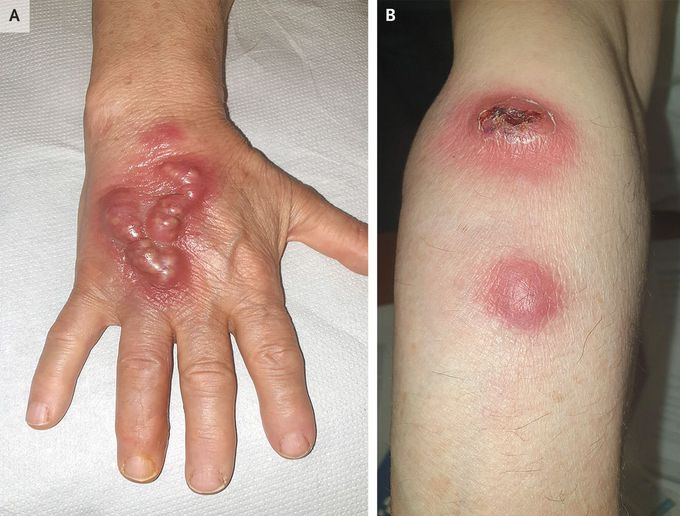


Sporotrichoid Nodular Lymphangitis from Nocardia brasiliensis
A 75-year-old woman presented to the infectious diseases clinic with a 10-day history of painful lesions on the right hand and forearm. The nodules had first appeared on the back of her hand at the site of a thorn puncture she had sustained while gardening. The lesions had spread up the hand along a red streak and then had appeared on the forearm. Physical examination was notable for a serpentine array of firm, tender nodules on the dorsum of the right hand with overlying erythema but no drainage (Panel A). On the dorsal side of the right forearm, there were two tender, erythematous nodules, with overlying ulceration of the more proximal one (Panel B). Lymphadenopathy was noted in the right axilla. An aspiration of the hand lesion was performed. Bacterial culture of the aspirate grew filamentous, gram-positive, acid-fast branching rods that were subsequently identified as Nocardia brasiliensis. A diagnosis of sporotrichoid nodular lymphangitis was made. Nodular lymphangitis occurs when infectious subcutaneous nodules spread proximally from the site of inoculation along lymphatic channels. The syndrome occurs in sporotrichosis but also in similar-appearing sporotrichoid infections with nocardia species, Mycobacterium marinum, and Leishmania braziliensis. After a course of trimethoprim–sulfamethoxazole, the lesions resolved.

